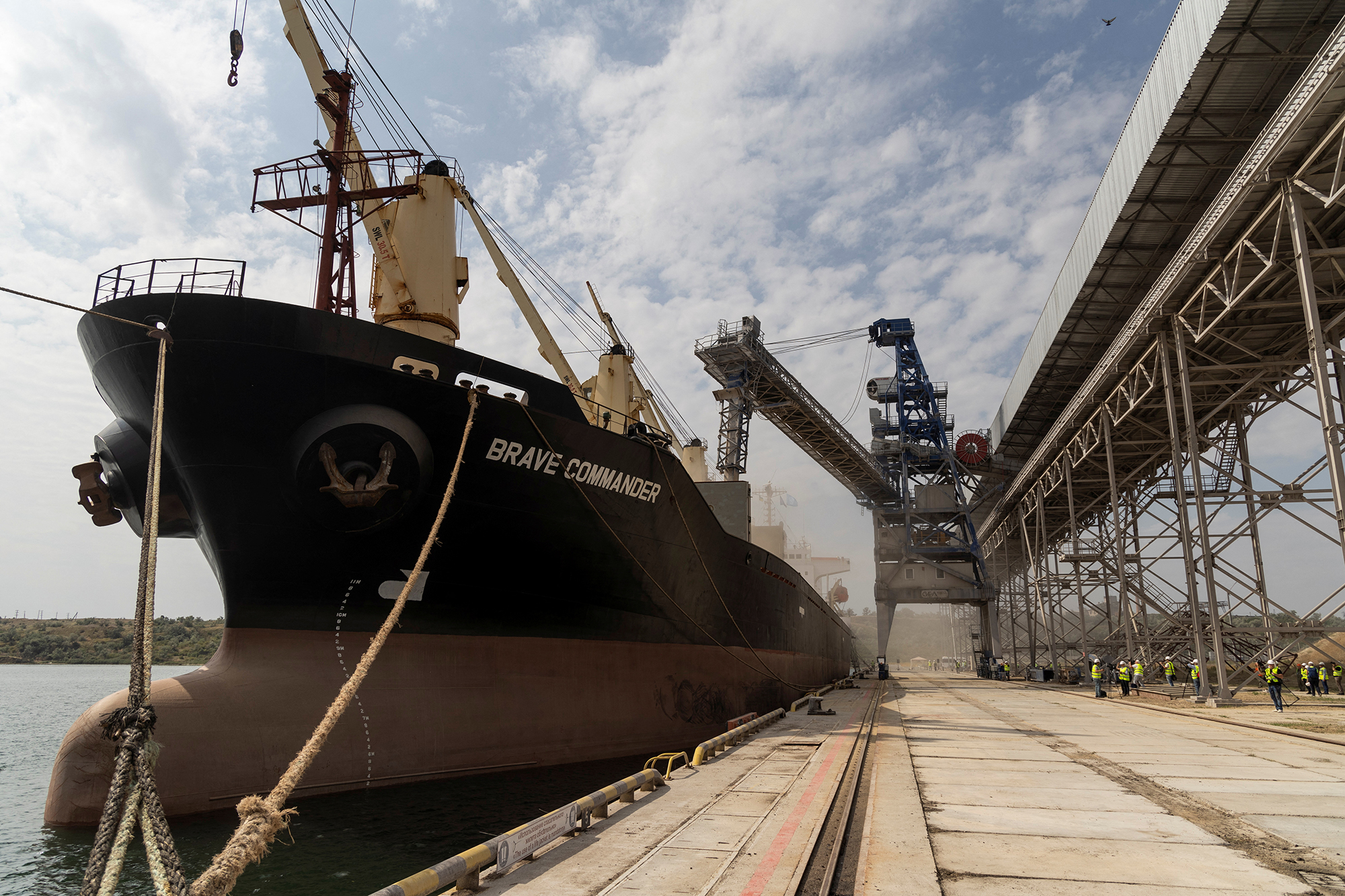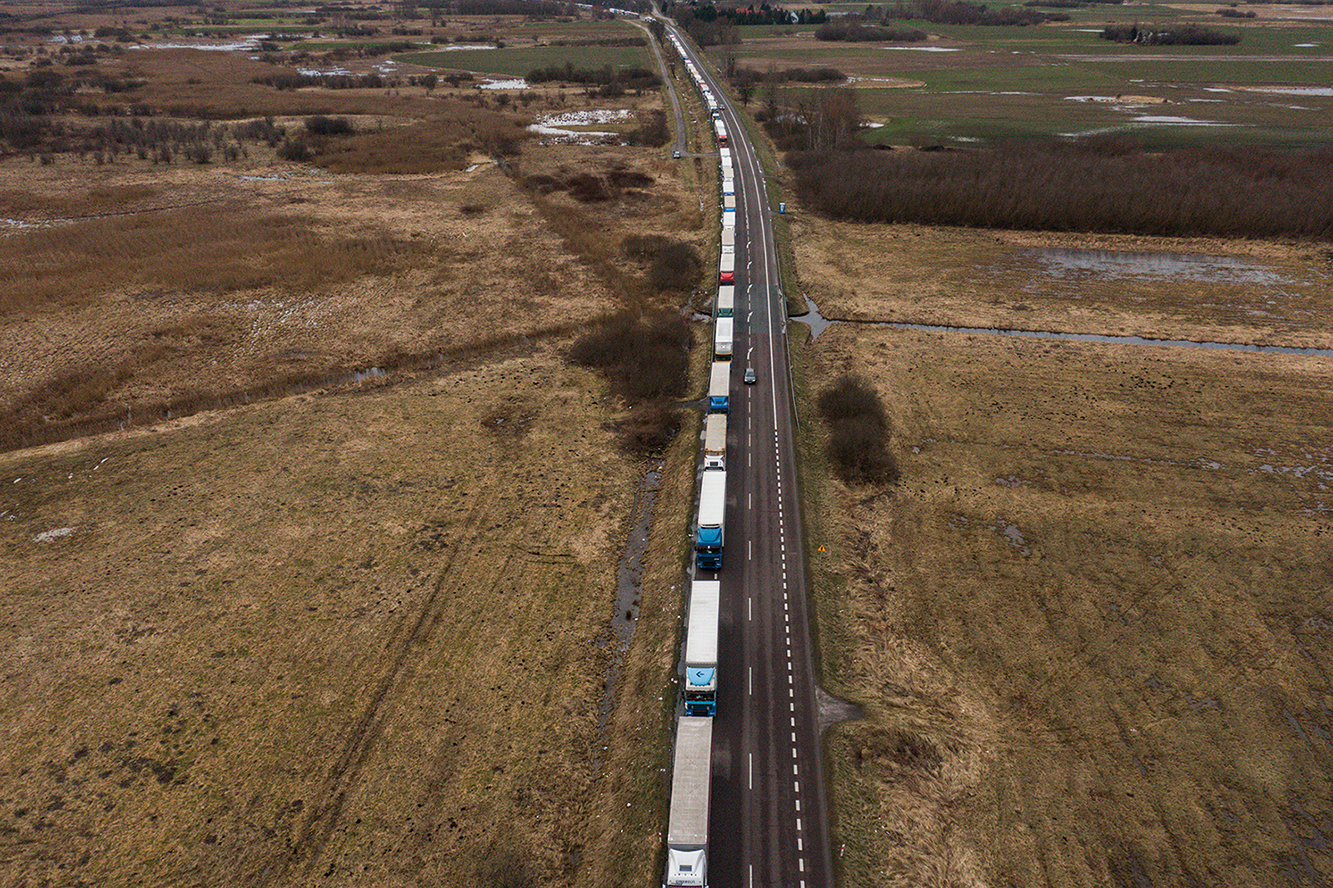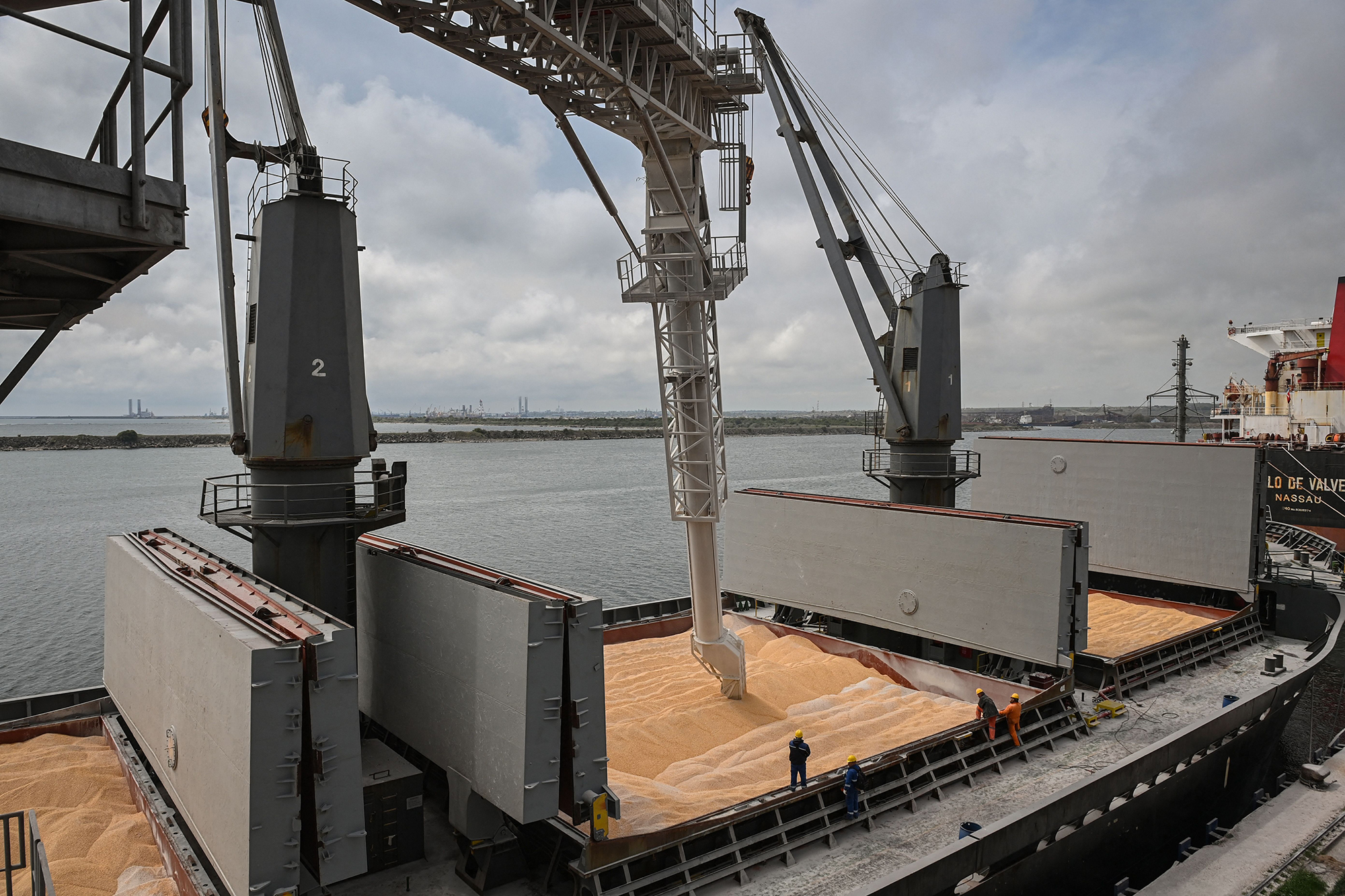How Ukraine Overcame Russia’s Grain Blockade
Russia’s sealing off of Ukraine’s vital Black Sea ports and its attacks on Ukrainian grain storage centers at one point raised worldwide alarm about possible food shortages. But by early this year, grain exports were nearly back to prewar levels.
Russia has moved aggressively to block Ukraine’s grain exports, aiming to crush both a critical economic sector and source of national pride. But Ukrainians have found ways to keep their crucial food supplies flowing as they enter the third year of Europe’s largest war in eight decades. Amid otherwise gloomy harbingers, the success of grain transport efforts is bringing hope to Ukrainians and relief to markets in Africa and the Middle East.

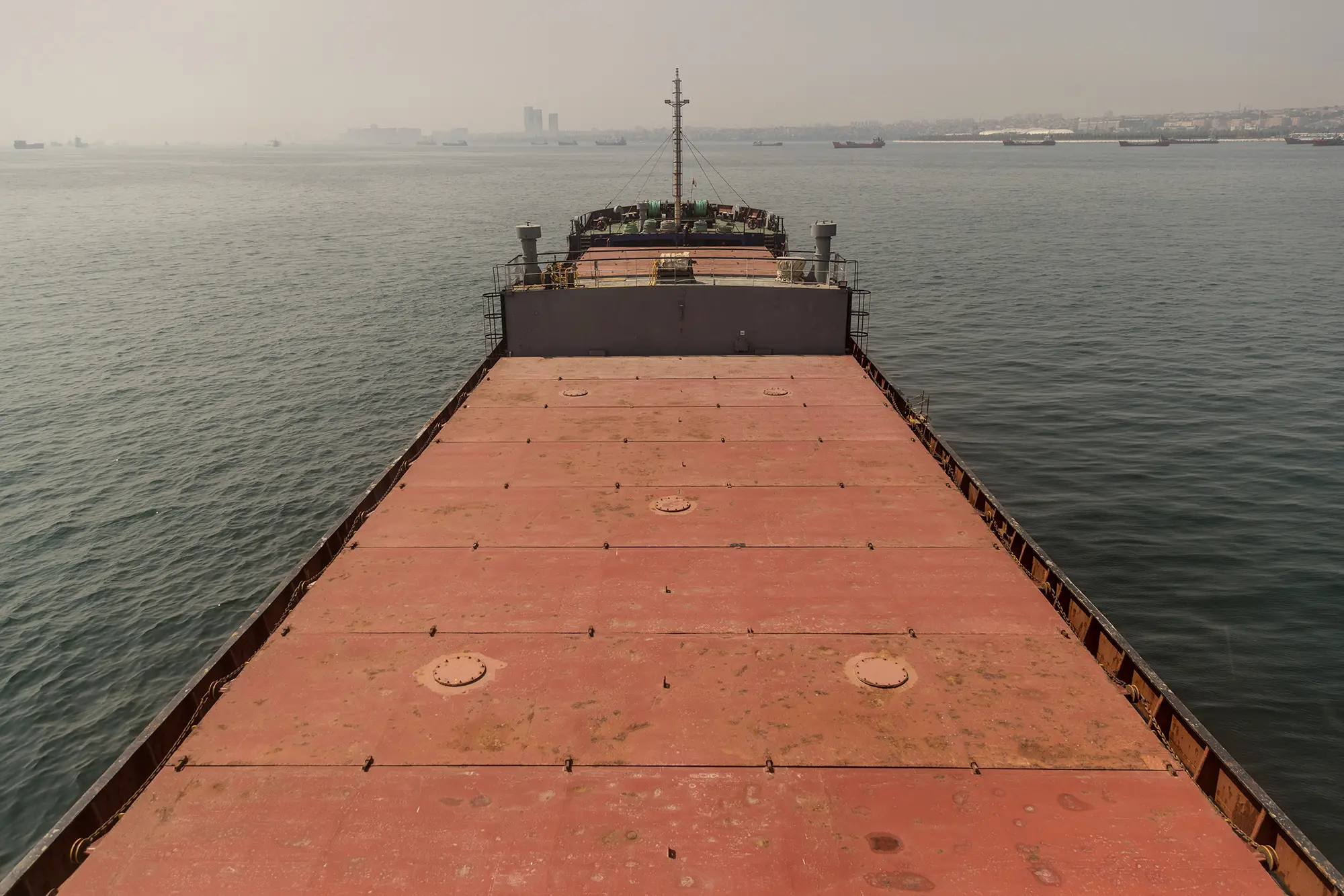
Known as the world’s breadbasket, Ukraine is one of the top grain producers globally.
Before Russia launched its full-scale invasion in 2022, Ukraine exported more than 60 million tons of grain a year, accounting for 10 percent of the global market.
Agriculture is central to the Ukrainian economy, supplying more than 40 percent of Ukraine’s export income and 14 percent of its jobs.
A Global Granary
Grains are a crucial portion of the world’s food supply and an especially significant form of aid for countries battling food insecurity.
More than half of Ukraine’s food exports go to lower-income countries, predominantly in Africa and the Middle East. In those regions, hundreds of millions of people face chronic hunger, and bread and other food made with grain often hold particular cultural importance. The United Nations’ World Food Program (WFP) has estimated that Ukraine’s farmland could feed some four hundred million people, though its exports have faltered in the wake of Russia’s invasion.

Before the conflict erupted, around 90 percent of Ukraine’s grain left through the country’s ports on the Black Sea. Departing commercial vessels were often laden with stacks of containers holding wheat, barley, corn, sunflower oil, and other grain products. The ports supplied staple goods to people around the world and anchored Ukraine’s economy. But a Russian blockade has changed the calculus.
Blockade and Bombardment
Russia has targeted Ukrainian grain and port facilities with air strikes, a potential war crime.
Soon after sending more than one hundred thousand troops into Ukrainian territory in February 2022, Russian naval vessels moved to surround Ukraine’s Black Sea ports, laying mines across trade routes. To protect its ports, Ukraine immediately mined much of its own shore and shallow waters. Within a few days of the invasion, the number of outgoing commercial ships plunged from more than one hundred fifty daily to nearly zero; Kyiv also halted exports of some of its own grain over fears of domestic food insecurity. Altogether, the war has forced Ukrainian farmers to abandon millions of acres of farmland.
After five months of war, spiking global food prices led Russia and Ukraine to agree to a July 2022 deal to get grain flowing again. Brokered by the United Nations and Turkey (which controls the Bosporus Strait, through which almost all Black Sea trade passes), the agreement provided Ukrainian merchant ships safe passage subject to UN inspection.
The deal returned grain exports to near prewar levels, but Moscow left the agreement just a year later and resumed bombarding Ukraine’s ports. The Kremlin justified the move by accusing Ukraine of using commercial shipping as a cover for military action and by complaining that Western sanctions had stifled Russian agricultural exports. However, some analysts see Moscow’s exit as economic warfare, as Russian grain exports reached a record high in the second half of 2023.

In addition, Russia has attacked Ukrainian ports on the Danube River, which Ukraine has increasingly used to export grain through Europe. Some of these drone and missile strikes landed near the territory of Romania, a member of the North Atlantic Treaty Organization (NATO). A strike on NATO territory, even if accidental, would drastically increase the chances of U.S. involvement in the war.
By Land, Sea, and Rail
Naval victories and innovative export routes have allowed Ukraine to keep its grain moving.
After the collapse of the deal, policymakers feared prices would again soar and potentially leave millions hungry. However, the worst was avoided due to a series of new export corridors that have kept the grain flowing.
Since May 2022, the European Union (EU) has allowed Ukrainian exporters enhanced access to overland shipping infrastructure to ensure their grain reaches the global market. But that has created other complications. These “solidarity lanes” have been met with some opposition from Ukraine’s western neighbors, whose road and rail routes have been strained by the exports. This has raised the cost of transporting goods while depressing the countries’ domestic grain prices. Hungary and Poland have at times threatened to block access to their roads amid protests from local farmers; EU policymakers have sought to smooth the path by providing Ukraine’s disgruntled neighbors with more than $150 million in funding.
In peacetime, Ukrainian merchant ships chart a direct course across the Black Sea, through Turkey’s Bosporus Strait, and out to international waters. But during the war, commercial vessels have traced the sea’s western coast, along the borders of friendly states such as Bulgaria and Romania. It is difficult for Russian submarines to maneuver in these shallow waters, and the path, near NATO territory, raises the possibility of Russia-NATO military confrontation. While Moscow has not explicitly targeted commercial ships, a few have been damaged by Russian mines.
Ukraine has also taken the fight to Russia. Though Russia had destroyed or seized nearly all of Ukraine’s navy ships over the past decade, Ukraine’s military has been racking up defensive successes. In the early phase of the war, it held off a Russian amphibious landing in the port city of Odesa and regained control of the strategic Snake Island. More recently, using an innovative combination of drones, missile strikes, and commando raids, the Ukrainian military has forced the bulk of the Russian Black Sea Fleet to abandon its historic anchorage in Sevastopol, Crimea, and relocate to ports further east. In the process, the Ukrainians say, the military has destroyed at least a quarter of Russia’s fleet.
“If Ukraine can neutralize Russia’s ability to block grain shipments through the Black Sea and can keep shipping lanes open, Moscow will lose a powerful source of leverage in any future peace negotiations,” retired Marine Corps Colonel Mark Cancian writes for Foreign Affairs.
Food Security Tremors
African and Middle Eastern countries rely most on Ukrainian grain. Experts say grain prices matter more to these countries than the quantity of exports.
Ukraine sends its grain around the world, but Africa and the Middle East rely heavily on its exports. At least fifteen African countries imported more than half of their wheat from either Russia or Ukraine in 2020.
The grain shock hit while many of these countries were struggling with persistent poverty and the economic fallout of the COVID-19 pandemic, including worldwide food price inflation that hit Africa especially hard. The Integrated Food Security Phase Classification, created by the UN Food and Agriculture Organization, estimates that at least 149 million people in Africa alone face acute food insecurity, a 150 percent increase from the 2019 level. In addition, an African household’s spending on food can often surpass 50 percent of its budget. Experts say Ukraine’s turmoil added to price pressures in the countries that could least afford it, and U.S. policymakers warned that Russia’s withdrawal from the grain deal would cause hunger to spike in Africa.
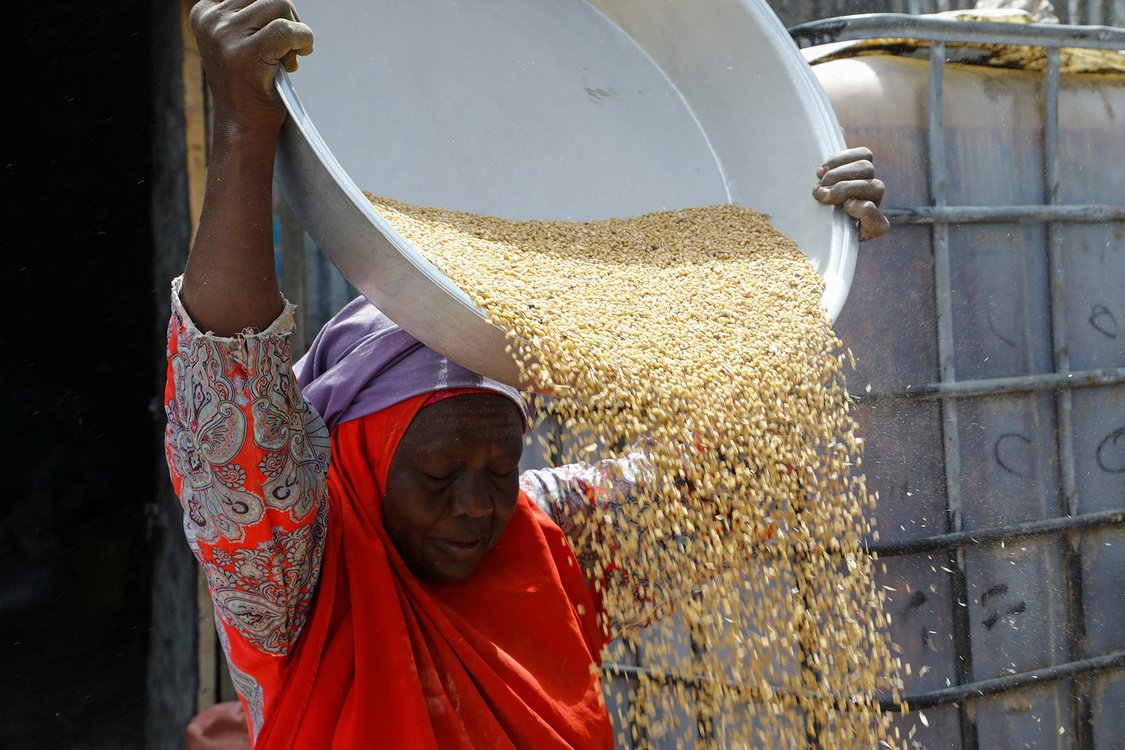
Still, some experts warn against exaggerating effects on sub-Saharan Africa. Food insecurity there stems from various factors, such as poorly developed agricultural markets, pandemic fallout, and climate change–related drought and other natural disasters. Only 13 percent of Ukraine’s grain exports under the Black Sea deal went to African countries, according to UN data. Meanwhile, Russia’s own grain exports to Africa, several times larger than Ukraine’s, have helped keep some pressure off the grain market even as they drive Western concern over the continent being pulled more deeply into Moscow’s orbit.
After the initial volatility of the war, global food prices have come back down, but the threat of food insecurity continues to loom.
What’s Next?
The worst has been averted. But falling U.S. aid could endanger future grain exports.
Russia’s invasion sent a shockwave through global food supply lines, spiked food inflation, and spurred new fears over supply-chain fragility and rising food insecurity. While Ukraine’s maneuvering has kept grain exports flowing, Russia’s destruction of Ukrainian farmland—and its ongoing occupation of one-fifth of Ukraine—could depress the supply of exportable grain. The war has contaminated an estimated 2.8 million hectares of Ukrainian farmland, and analysts project Ukraine’s upcoming summer yield will be its smallest in twelve years. Export could be aided by the grain deal’s revival, but that appears remote.
Meanwhile, the country’s military achievements through two years of conflict have relied on U.S. aid, which has stalled as of early 2024. That means grain exports could again be threatened. “If Ukraine cannot replace the munitions it fires and the equipment it loses in battle, Russian forces will again encroach on Ukrainian coasts,” Cancian writes. “Were that to happen, Ukraine’s victory at sea could be fleeting.”

Recommended Resources
CFR’s Kali Robinson charts the countries most at risk from the end of the Black Sea grain deal.
For Foreign Affairs, the Center for Strategic and International Studies’ Mark Cancian examines how Ukraine subdued the Russian naval fleet.
In this interview with Think Global Health, Purdue University botanist Tesfaye Mengiste explains how a Russian attack on a Ukrainian seed bank threatened global food security.
The Center for European Policy Analysis’s Olya Korbut dissects how Ukraine broke through the Russian blockade and proved experts worried about idle grain ports wrong.
For Foreign Policy, Nigeria-based journalist Olatunji Olaigbe points out how Western perspectives of the war’s geopolitics paint a misguided picture about solving hunger in Africa.
CFR Military Fellow Kristen D. Thompson looks at how the drone war in Ukraine is transforming conflict.
 Online Store
Online Store
